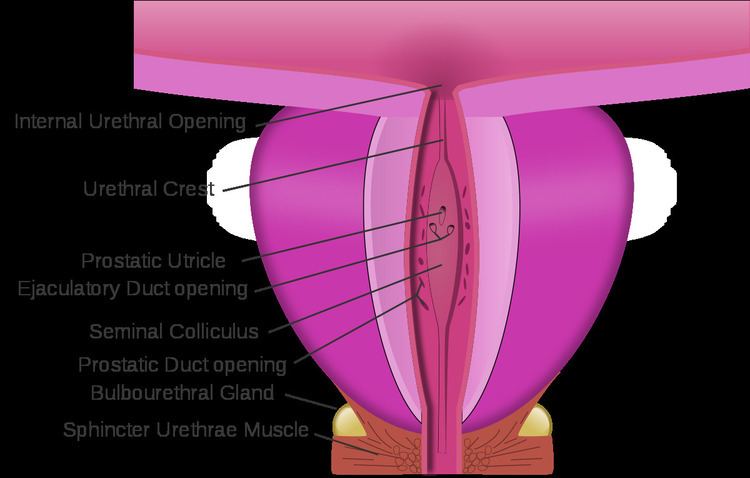Dorlands/Elsevier p_07/12616970 | ||
 | ||
Latin Pars intermedia urethrae masculinae,pars membranacea urethrae masculinae | ||
The intermediate part of male urethra (membranous portion) is the shortest, least dilatable, and, with the exception of the external orifice, the narrowest part of the canal.
It extends downward and forward, with a slight anterior concavity, between the apex of the prostate and the bulb of the urethra, perforating the urogenital diaphragm about 2.5 cm below and behind the pubic symphysis.
The hinder part of the urethral bulb lies in apposition with the inferior fascia of the urogenital diaphragm, but its upper portion diverges somewhat from this fascia: the anterior wall of the membranous urethra is thus prolonged for a short distance in front of the urogenital diaphragm; it measures about 2 cm in length, while the posterior wall which is between the two fasciæ of the diaphragm is only 1.25 cm long. The anatomical variation in membranous urethral length measurements in men have been reported to range from 0.5 cm to 34.3 cm.
The membranous portion of the urethra is completely surrounded by the fibers of the Sphincter urethrae membranaceae.
In front of it the deep dorsal vein of the penis enters the pelvis between the transverse ligament of the pelvis and the arcuate pubic ligament; on either side near its termination are the bulbourethral glands.
